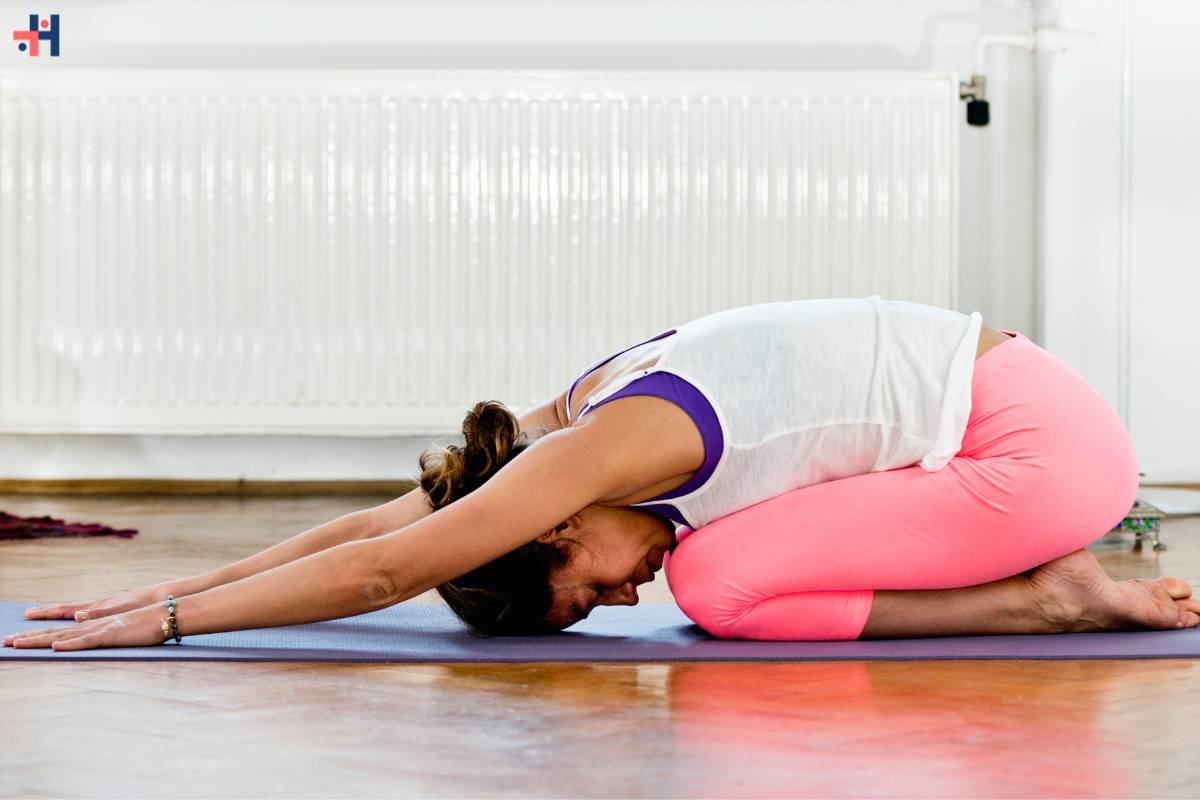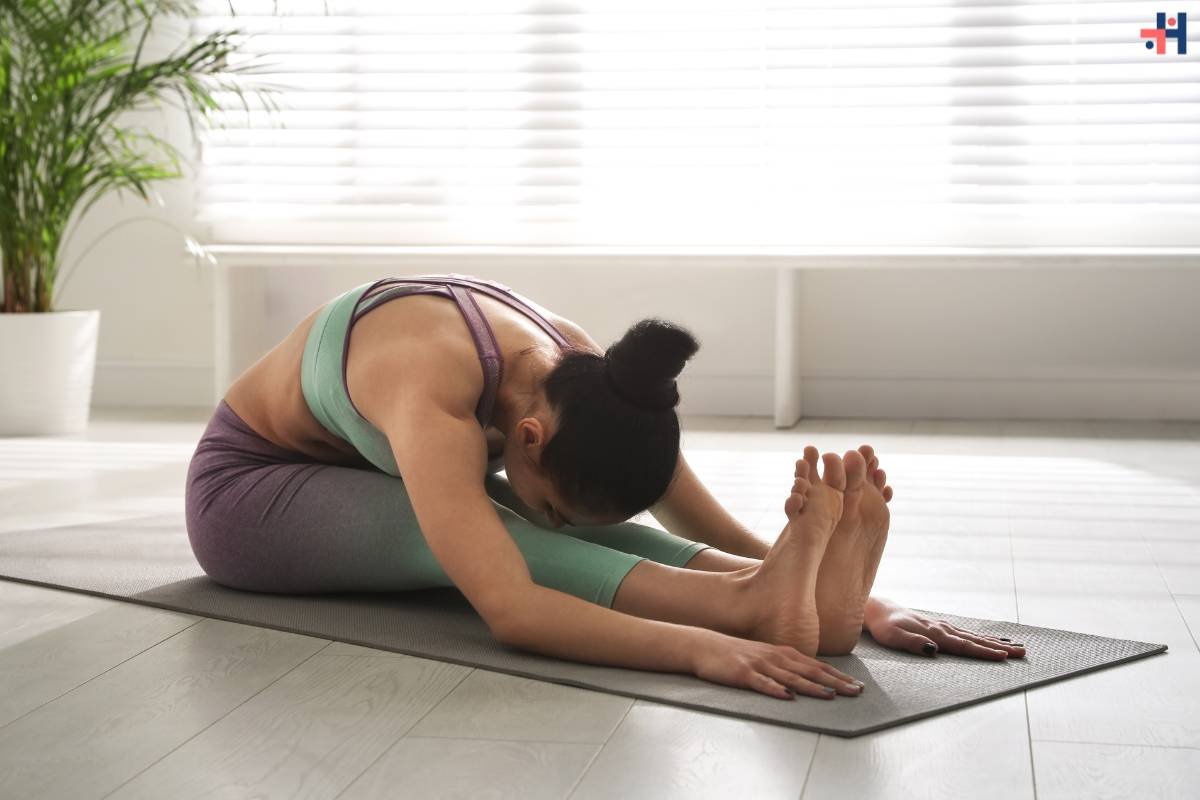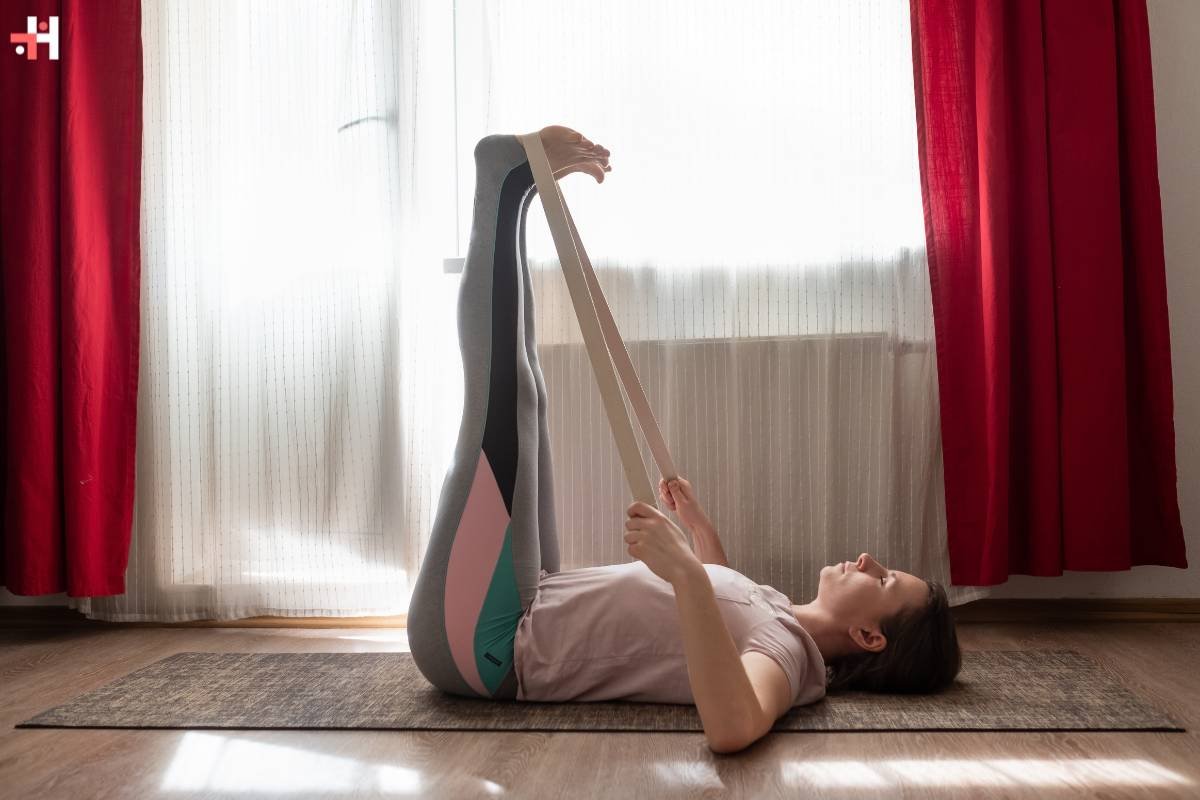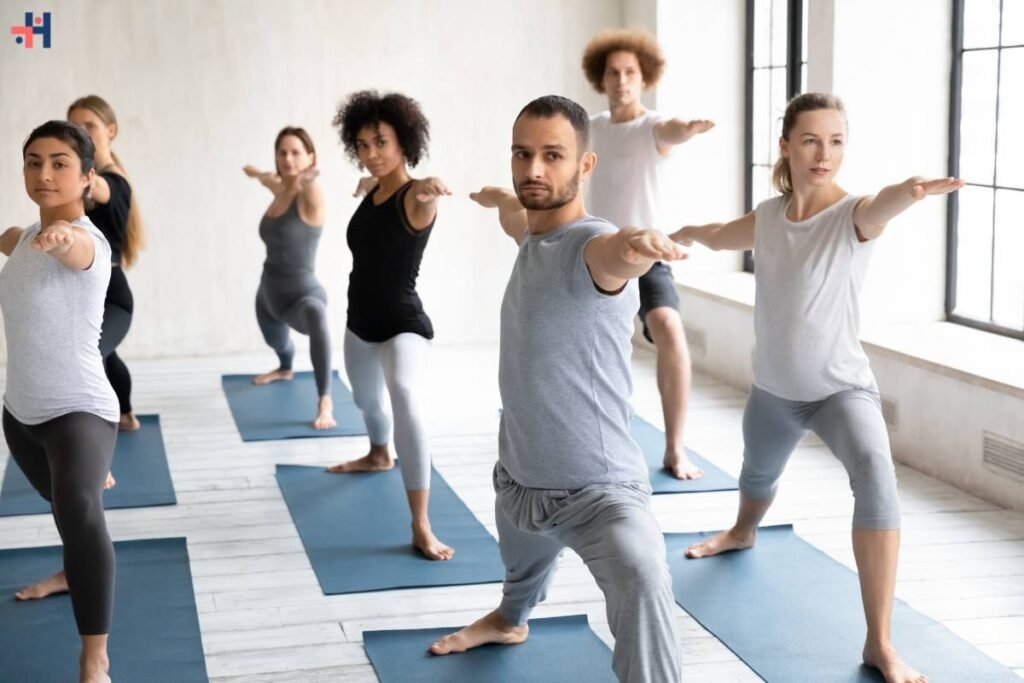Yoga is a centuries-old practice that originated in ancient India and has spread throughout the world as a popular form of wellbeing. It can be intimidating for newcomers to yoga to navigate the wide range of positions and reap the benefits of this ancient practice. But yoga’s flexibility and accessibility are what make it so beautiful. We go over a carefully chosen list of basic yoga poses for beginners in this extensive book, encouraging people to take a peaceful path to better physical and mental health.
Here are 15 yoga poses for beginners:
1. Mountain Pose (Tadasana):
Let’s commence our exploration of yoga poses for beginners with the foundational Mountain Pose (Tadasana). Tadasana is a standing pose that cultivates awareness of posture and alignment. Begin by standing tall, feet hip-width apart, and arms by your sides. Engage the core, reach the arms overhead, and breathe deeply. This pose establishes a strong and grounded foundation for the yoga practice.
2. Downward-Facing Dog (Adho Mukha Svanasana):
Downward-Facing Dog (Adho Mukha Svanasana) is a staple in yoga sequences, offering a rejuvenating stretch for the entire body. Starting on hands and knees, lift the hips towards the ceiling, straightening the legs, and creating an inverted V shape. This pose stretches the spine, hamstrings, and calves, making it ideal for beginners to enhance flexibility.
3. Child’s Pose (Balasana):

Child’s Pose (Balasana) provides a gentle resting position, making it a perfect inclusion in yoga poses for beginners. Begin on hands and knees, then lower the hips towards the heels while extending the arms forward. This pose offers a soothing stretch for the back, shoulders, and hips, promoting relaxation and stress relief.
4. Tree Pose (Vrikshasana):
Tree Pose (Vrikshasana) is a balancing posture that encourages focus and stability. Stand on one leg, placing the sole of the other foot on the inner thigh or calf, avoiding the knee. Bring hands to the heart center or extend them overhead. This pose not only enhances balance but also strengthens the legs and core.
5. Warrior I (Virabhadrasana I):
Warrior I (Virabhadrasana I) is a dynamic standing pose that builds strength and flexibility. From Mountain Pose, step one foot back, keeping the front knee bent and arms reaching overhead. This pose energizes the entire body, particularly the legs, and opens the chest, encouraging a sense of empowerment.
6. Warrior II (Virabhadrasana II):
Warrior II (Virabhadrasana II) is another empowering standing pose for beginners. From Warrior I, open the hips and shoulders to face the side, extending the arms parallel to the ground. This pose enhances strength, endurance, and concentration while promoting a sense of groundedness.
7. Cobra Pose (Bhujangasana):
Cobra Pose (Bhujangasana) is an invigorating backbend that strengthens the spine and opens the chest. Lie on the stomach, place hands under the shoulders, and lift the chest while keeping the lower body grounded. Cobra Pose not only improves posture but also helps relieve tension in the back.
8. Seated Forward Bend (Paschimottanasana):

For beginners exploring seated poses, the Seated Forward Bend (Paschimottanasana) offers a deep stretch for the hamstrings and lower back. Sit with legs extended, inhale to lengthen the spine, then exhale to reach forward towards the toes. This pose promotes flexibility in the spine and a sense of calm.
9. Bridge Pose (Setu Bandhasana):
Bridge Pose (Setu Bandhasana) is a gentle backbend that engages the core and strengthens the legs. Lie on the back, bend the knees, and lift the hips towards the ceiling. Hold the pose, feeling the stretch across the chest and shoulders. Bridge Pose is an accessible introduction to backbends for beginners.
10. Corpse Pose (Savasana):
Corpse Pose (Savasana), or Corpse Pose, concludes many yoga sessions, offering a moment of relaxation and reflection. Lie on the back with legs extended, arms by your sides, and close the eyes. Focus on deep, mindful breathing, allowing the body to release tension. Savasana promotes tranquility and a sense of completeness.
11. Cat-Cow Stretch (Marjaryasana-Bitilasana):
Cat-Cow Stretch (Marjaryasana-Bitilasana) is a dynamic sequence that enhances spinal flexibility. Begin on hands and knees, arch the back (Cow Pose) on inhale, and round the spine (Cat Pose) on exhale. This fluid movement warms up the spine, increases mobility, and releases tension in the neck and back.
12. Puppy Pose (Uttana Shishosana):
Puppy Pose (Uttana Shishosana) is a gentle stretch that targets the upper body and spine. From hands and knees, walk the hands forward, lowering the chest towards the ground while keeping the hips over the knees. Puppy Pose is an accessible variation of Downward-Facing Dog, promoting shoulder and spine flexibility.
13. Chair Pose (Utkatasana):
Chair Pose (Utkatasana) is a foundational standing pose that strengthens the legs and engages the core. From Mountain Pose, bend the knees and lower the hips as if sitting in an imaginary chair, while reaching the arms overhead. This pose builds endurance and enhances lower body strength.
14. Extended Triangle Pose (Utthita Trikonasana):
Extended Triangle Pose (Utthita Trikonasana) is a standing pose that stretches the sides of the body and strengthens the legs. From Warrior II, extend the front leg and reach towards the toes, keeping the torso extended. This pose offers a deep stretch for the hips, hamstrings, and side body.
15. Legs Up the Wall Pose (Viparita Karani):

Legs Up the Wall Pose (Viparita Karani) is a restorative inversion suitable for beginners. Sit with one side against a wall, then swing the legs up, resting them against the wall. This pose promotes relaxation, reduces swelling in the legs, and provides a gentle inversion for improved circulation.
Conclusion:
These simple and helpful yoga poses for beginners set the groundwork for a life-changing practice for newcomers to the practice. Yoga’s versatility, inclusivity, and ability to meet people where they are on their journey towards wellbeing are what make it so beautiful. Unlocking the immense potential that yoga offers for holistic well-being, one can develop strength, flexibility, and a sense of inner calm by embracing these introductory yoga poses for beginners. I hope practicing yoga will be just as insightful and revitalising as the poses themselves.









